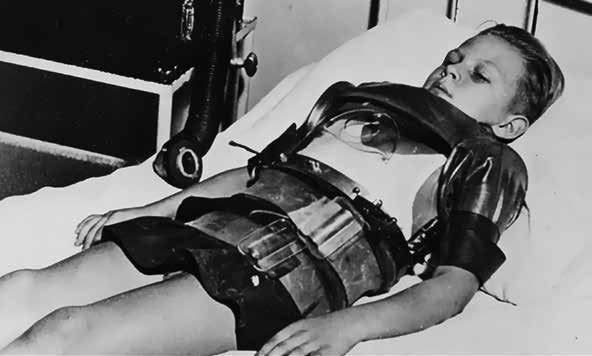229 years after the introduction of the smallpox vaccine we reflect on how inoculation has helped prolong human life
It is true to say that prior to the Covid pandemic many of us took little time to consider the good of vaccines. Yet nearly every person who reads this article will have received a vaccination, at one time or another. They are the most important measures of preventative medicine in guarding the population from diseases and infections. What’s more, since their introduction diseases that once terrified our parents or their predecessors have been considerably diminished or eradicated. Some of us, for instance, may have neighbours, friends, or family who have post-polio syndrome, and others might recollect diphtheria which caused hundreds of deaths in Ireland.
Smallpox
Smallpox, an acute contagious disease, was one of the most devastating known to humanity. Symptoms included fever, headaches, body aches, and vomiting. A rash that appeared within two to three days of infection generally resulted in scarring which was acute. But, more importantly, smallpox caused millions of deaths worldwide and was the terror of Irish families. Particularly since the death rate of children infected was over 80 per cent.

Smallpox survivor Robert Emmet www.ricorso.net/
Take, for example, the Irish patriot Robert Emmet. He was born in Dublin in 1778, just two years after Louis XV of France had succumbed to smallpox in May of 1776. Robert was the fourth successive boy to be named in honour of his father, the State physician’ yet the only child to survive into infancy. Historian Ruán O’ Donnell recorded that the Emmets lost a total of thirteen children. Robert was lucky to survive from smallpox with only minor scarring (many survivors were left with terribly pock-marked skin or even blind). Nonetheless, the Emmet case offers some indication of how contagious diseases once ravaged this city.
The Eradication of this Disease
On May 14, 1796 Dr Edward Jenner introduced the smallpox vaccine. Within two years the disease, which once scarred millions for life, and ravaged populations for centuries, had decreased by two-thirds. It took longer to regress in Ireland, through poverty and famine. However, from the 1880s it was in decline, with the last reported death in Ireland being recorded in 1907. The administration of this vaccine ceased in Ireland in 1972, and the World Health Organisation declared smallpox eradicated worldwide in 1979. The suppression of smallpox is a good example of how inoculation works, and how global access can save countless lives around the world.
Whooping cough
Whooping cough, a highly contagious illness that can be life threatening, is most serious in babies of less than six months of age – many babies are hospitalised with complications such as pneumonia and brain damage. In response to this life threatening illness Dubliners once brought the sufferers to Bray in Wicklow, so that they could take in the sea air. Fine Gael TD John Costello once noted during a meeting on The Public Health Bill 1945 that “I know that with Dublin people there has been a kind of notion—I suppose the Parliamentary Secretary, as a medical man, would call it a superstition—that one of the ways to cure whooping cough was to bring the sufferer for walks around the gas works in Ringsend. That has been the Dublin cure for it, and I think it has been as effective as any palliative the medical profession has been able to produce.”
The gas works remedy has been resigned to folk law, but the whooping cough vaccine, developed by Pearl Kendrick and Grace Eldering in the 1930s, is available. It is at present offered to all children as part of the 6-in-1 vaccine at two, four and six months of age. At four, five, years of age (4-in-1 vaccine) in 1st year of second level school (Tdap vaccine).
Diphtheria
Many Dubliners will recall diphtheria, a deadly bacterial infection that was spread from person to person, either by the air or by direct contact. It severely restricted the breathing of those contaminated, with children particularly at risk. The eradication of diphtheria owes much to French veterinarian Gaston Ramon who in the 1920s created what was essentially the forerunner to the DTP vaccine. After it was first introduced into Ireland cases were reduced considerably. The introduction of a mass immunisation scheme by Dublin Corporation in 1940 saw a further decline in mortality rates. With the introduction of the combination diphtheria/tetanus/pertussis (DTP) vaccine occurring in 1952/1953.

Today, I am happy to say, diphtheria has been diminished to near extinction. The vaccine is currently administered to Irish children as part of the 6-in-1 vaccine at two, four and six months of age. The 6-in-1 also against Hepatitis B, Hib (Haemophilus Influenzae b) Pertussis (Whooping Cough) Polio and Tetanus.
Polio
Some of us might recall the sugar cube that preceded school inoculation. Like Mary Poppins sang in the 1964 motion picture ‘“A spoonful of sugar helps the medicine go down.” The song was referring to polio, a viral infection that caused nerve injury which often led to partial or full paralysis. The organisation Polio Survivors noted that “this disease once struck fear into the hearts of parents in Ireland, particularly during the 40s and 50s” as polio epidemics occurred several times in the mid-twentieth century.

Polio often led to paralysis in young people and children www.bbc.com
This highly contagious disease often caused sufferers to be placed in “iron lungs” (negative-pressure ventilation machines that allowed them to breathe). The time spent in these apparatuses ranged from weeks, months to decades. In the mid-1950s Jonas Salk developed an inactivated polio vaccine, and a subsequent oral polio vaccine was offered by Albert Sabin in 1962. By the end of 1969, a booster campaign against polio was underway, with a highly satisfactory response of over 90 per cent of children under 18 years. The vaccine is administered to every child today, as part of the 6-in-1 vaccine at two, four and six months of age. The 6-in-1 also protects against Diphtheria, Hepatitis B, Hib (haemophilus influenzae b), Pertussis (Whooping Cough) Polio and Tetanus.
Final Thought
People stopping to pause in the face of a new vaccine is nothing new. When the English government tried to make smallpox vaccinations compulsory it was met with protest. If people are to embrace something they must first see that it is good. Although the Covid vaccine was quickly brought to market, what was at stake was the survival of ourselves and our species. It is true that vaccinations come with risks, but such risks need to be assessed in light of a good end. This is where the health system is essential, so it is explicitly clear what is being offered. What is the good of it for the individual and their community?
Yet, it is often through means of individual reflection and learning that people come to value what is being offered. This is where smallpox, of which Robert Emmet was one survivor, represents a model of global access to vaccines which has saved countless lives. In Ireland, it is facilitated by Community Medical Doctors, who work on school vaccination programmes. We can be very proud of how they protect our children from infectious diseases. This programme is freely available, and amongst our greatest achievements as a people.



